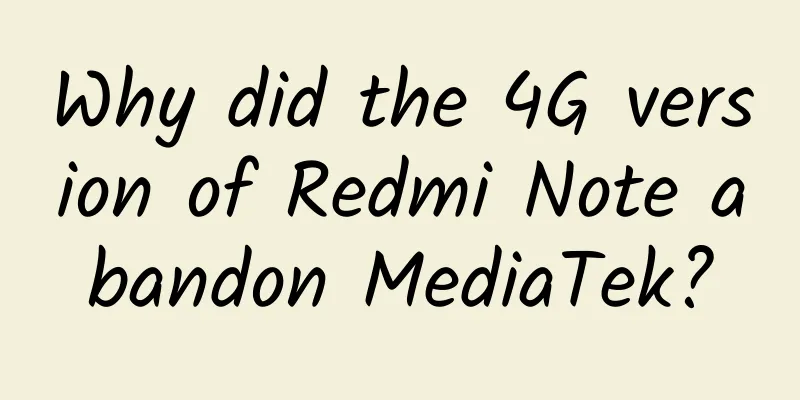Is the Four Kingdoms War on Internet TV a great success?

|
Recently, Internet TVs have been competing to be the first to appear, and the press conferences have been held non-stop. In addition to the parameters and prices of each new product, the war of words outside the press conference is also quite good. Recently, LeTV, Xiaomi and Coocaa have joined hands to play a war of words, you spit in my face, and I spit on you. Why not, let's take a look at the war of words between various TV manufacturers. A four-nation battle, a mild war of words? Recently, several domestic Internet TV manufacturers have launched new products, and the intensive launch time of new products makes people wonder whether they have discussed the relevant issues in advance. According to convention, during the intensive launch period of new products, there will be a lot of gossip. On the day of Xiaomi TV's release, Coocaa suddenly launched an attack, mocking Xiaomi for "making a lot of noise but not much action", and officially launched a challenge. After the release of Xiaomi TV 3, the WeChat Moments of the media were flooded with messages such as "Don't cook without rice" and "Just be a cool kid". From this series of actions, it can be seen that Coocaa was fully prepared for Xiaomi's new product launch, and the copywriting was very appropriate. Unfortunately, Xiaomi did not respond to this challenge. In any case, Coocaa has dealt a heavy blow to Xiaomi this time, but it's a pity that it lacks some drama, and the audience shouted that it was not enough. On April 1, Coocaa released new products and announced the news of Coocaa's independent operation. So, will Xiaomi ambush after the Coocaa press conference? Let's wait and see. Going back a step, when Konka launched its new product, LeTV accused Konka of plagiarizing the concept of super TV. LeTV thought that by using the plagiarism point, it could hit Konka's weak spot and ridicule Konka for its lack of innovation. In the end, it can only be said that the planning of the industry knowledge was not enough, and it hit a wall, giving people a chance to defend and counterattack. Konka took the opportunity to show everyone its "forward-looking" super TV from 14 years ago, and took the opportunity to play #Looking for the super TV from 14 years ago# on Weibo, having a lot of fun. At the beginning of the year, Wang Chuan, head of Xiaomi TV, took the lead in firing at LeTV, criticizing LeTV for not being open and saying that it was doomed, claiming that the world of Internet TV was open. LeTV did not refute, and directly taught Wang Chuan how to make content in a limerick. Considering that Xiaomi previously claimed to invest 1 billion US dollars in content, what does Lei Jun think of this teaching method? In the Chinese smartphone market, Xiaomi is very successful, playing fan marketing and gathering thousands of Mi fans. Xiaomi founder Lei Jun is also known as Lei Juns. Judging from Xiaomi products, Xiaomi is a poor version of Apple. At least Mi fans are proud to use Xiaomi products. With the momentum of Xiaomi mobile phones, Xiaomi accelerated the development of peripheral products, which was considered to be a good thing. However, when Xiaomi was about to enter the threshold of Internet TV, it found that LeTV TV was already blocking the way. What was hateful was that LeTV was also a master who knew how to play with the Internet. Xiaomi thought, everyone said that Xiaomi was the originator of China's Internet thinking, how could I let LeTV be the king, so I had to give it a try. In this Internet TV war, LeTV and Konka's PR methods are relatively mild, with each company showing affection. Xiaomi and Coocaa's PR methods are more aggressive, direct and clear. In fact, there is nothing wrong with spitting during a press conference, after all, a sense of presence is still needed. However, the spitting needs to be backed by the product. Internet TV will not win by price, product quality is still the first priority. After the drool, how about the product? On such a great day as April Fools' Day, Coocaa announced that it will operate independently and at the same time launched the Coocaa Smart Screen A43. The new product's new usage and concept have broken through the bottleneck of traditional smart TV products. In terms of appearance and craftsmanship, the A43 adopts an integrated and simple style, with an extremely narrow frame of 5.9mm and a 50px ultra-thin body, and adopts an ART3 module front frame design; in terms of hardware configuration, it adopts a 4+4 multi-core movement, the most mature TV chip solution, and powerful computing power, and can easily run 3D games and high-definition videos; in addition to the appearance and hardware, I think what is even cooler is that Coocaa A43 is the first to introduce the three-in-one smart TV concept. Its unique three-in-one approach for children, parents and young people to create an unprecedented application experience. All three versions have their own unique features. People like me who don't have children and whose parents are still young may not pay much attention to the children's version and the parent's version. In contrast, I am more concerned about the actual situation of the young version, which can be directly controlled by mobile phone throughout the whole process. The film and television resources on the mobile phone can be watched on the big screen, and all settings can be easily completed through the mobile phone. The control design of Coocaa A43 is innovative, and the overall design is very bold, providing new ideas for the future direction of smart TV. At the same time, after independent operation, Coocaa has only online channels, and the annual sales target for 2015 is set at 1.5 million units. Someone once joked that Xiaomi never loses in hardware data. The 40-inch Xiaomi TV 2 released at the end of March is also a hardware monster. Its mainstream parameters are not inferior to Coocaa A43, and its memory and flash memory are even better than Coocaa A43. In terms of appearance design, Xiaomi TV 2 can only be said to be average, and it still has the body of a traditional TV. In terms of large-screen interaction, Xiaomi TV 2 can also support remote control of TV, projection of mobile phone photos and videos through mobile phone applications. In short, the new Xiaomi TV has no obvious weaknesses, nor does it have any big highlights. With the same price and the same core parameters, it is not an exaggeration to say that the mediocre 40-inch Xiaomi TV 2 is completely defeated by the innovative Coocaa A43. This is probably the confidence of Coocaa to challenge Xiaomi before. The Konka Super TV T60, which was launched earlier, is a blockbuster product of the in-depth cooperation between Konka and Tencent. In terms of hardware, the T60 Super TV uses an 8-core smart platform, A9 architecture, based on Android 4.4, and is equipped with Konka's latest YIUI control system. In terms of software, the T60 Super TV uses the broadcast control platform of GITV Galaxy, integrating the rich video resources of Tencent Video. The launch of T60 is a strong combination of old TV manufacturers and Internet giants, with complementary advantages and disadvantages, and it is also a good Internet TV. However, with the same 40-inch screen, the T60 is priced at 3999, which is still a big gap with its peers. However, Fan Bingbing's endorsement can still add a lot of points. The core data of the 40-inch LeTV TV is similar to that of the Xiaomi TV 2, and the appearance and size are similar, but the price is slightly higher, and there is no big highlight. However, fortunately, LeTV is ahead and has labeled itself as China's No. 1 Internet TV brand, which can take a lot of advantages. In addition, LeTV TV is backed by the rich content resources of LeTV.com, which can also attract a considerable number of users. In short, we can understand the manufacturers' behavior of showing off their presence during the new product launch conference. After all, we also like excitement. As a user, I think the better situation is that after watching the war of words, everyone can buy the TV they like. Text/Yu Tuo Weibo: @喻拓Yt TMT observer and new media marketing practitioner. Share the most cutting-edge business reviews and new media marketing knowledge with you every day. If you like this article, please share it with your friends or follow Yu Tuo’s official account yutuoorg As a winner of Toutiao's Qingyun Plan and Baijiahao's Bai+ Plan, the 2019 Baidu Digital Author of the Year, the Baijiahao's Most Popular Author in the Technology Field, the 2019 Sogou Technology and Culture Author, and the 2021 Baijiahao Quarterly Influential Creator, he has won many awards, including the 2013 Sohu Best Industry Media Person, the 2015 China New Media Entrepreneurship Competition Beijing Third Place, the 2015 Guangmang Experience Award, the 2015 China New Media Entrepreneurship Competition Finals Third Place, and the 2018 Baidu Dynamic Annual Powerful Celebrity. |
<<: NetQin announced its brand strategy in May: entertainment transformation focuses on
>>: Hardware innovation and experience innovation are the key to the future development of smart TVs
Recommend
From 0 to 1, how to build a ToB market operation system? (superior)
Disclaimer: This article is only based on persona...
10 tips on traffic
When it comes to understanding traffic , many peo...
How to build a new media operation matrix?
When the number of user groups of a public accoun...
How do Tmall, JD.com, etc. generate off-site traffic?
Whether it is domestic Tmall and JD.com, or cross...
The Dragon Boat Festival has passed, but the story of "Ai" continues~
Editor’s Note: With the arrival of the Dragon Boa...
Narcissus or garlic sprouts? Beware of poisoning if you eat the wrong one!
Audit expert: Li Guangwang Director of the Natura...
Analyze Baidu's bidding operation and ranking skills!
With the rapid development of Internet e-commerce...
The most admired luxury brand: luxury advanced experience first
Although it cannot be said that China's luxur...
4 Effective Strategies to Increase App User Engagement
The definition of user engagement varies from pro...
10 little habits after meals that many people take for granted, 1 of which is really not recommended
Regarding "what you can and cannot do after ...
Be careful, "electronic mustard tuber" is increasing your weight and harming your stomach
In recent years, a product of the new era seems t...
I can tolerate being drunk, but I can’t tolerate being drunk on tea!
We all know that drinking tea can refresh the min...
Zhihu recommended core logic and traffic guide!
This article studies the Zhihu platform from the ...









